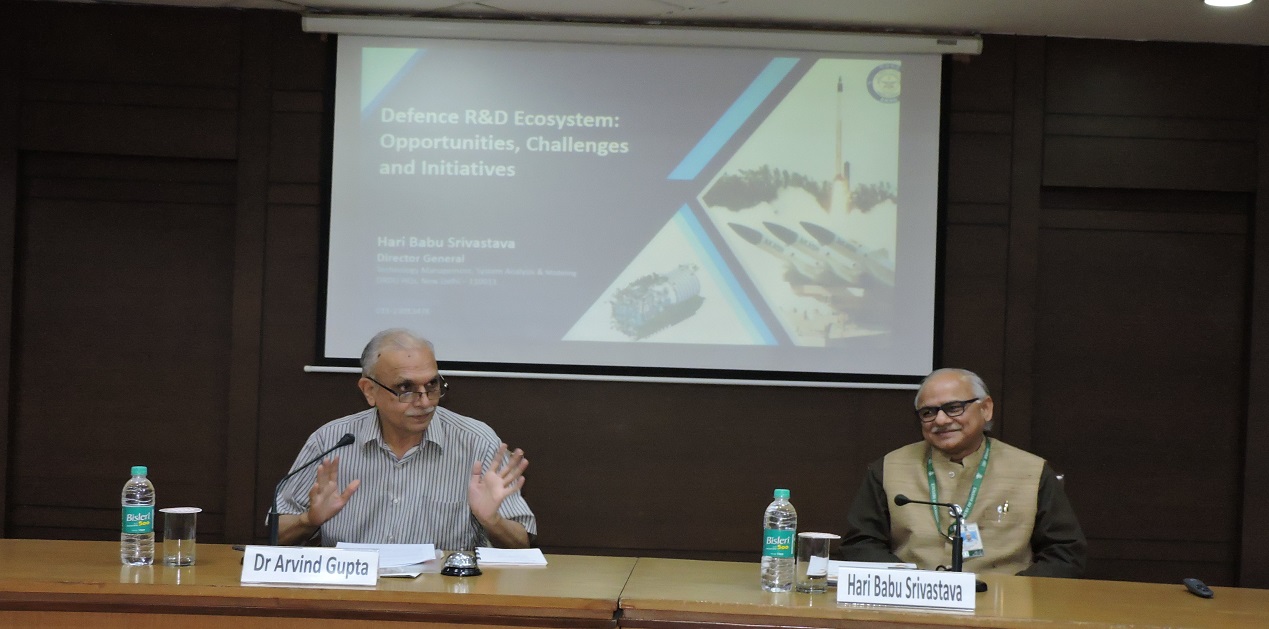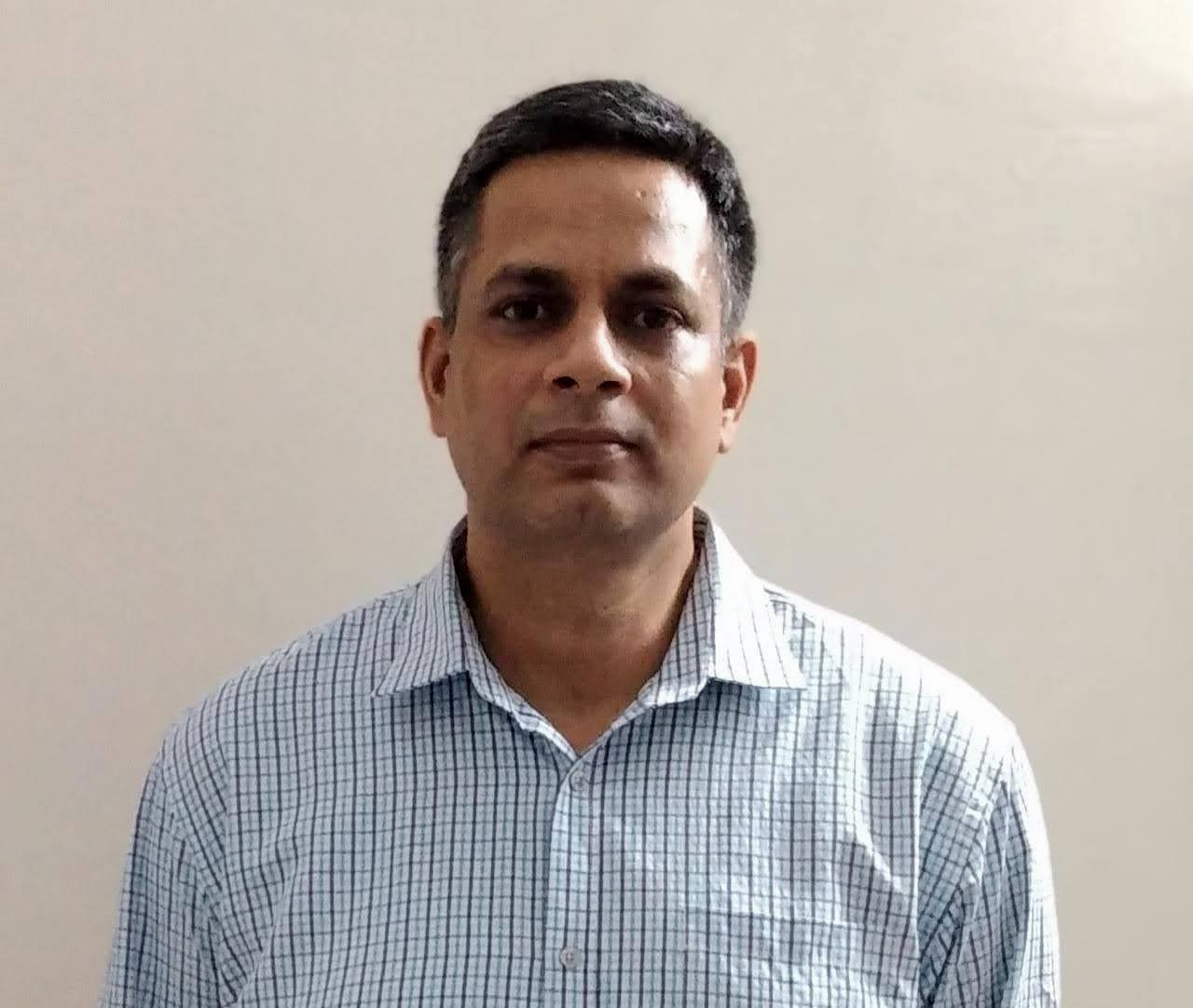(VIF organized an interaction among DRDO, Indian defence industry and the strategic community on 8th June 2022 on synergizing the Defence R&D ecosystem in India. Mr Hari Babu Srivastava, Director General Technology Management, DRDO apprised the attendees about the opportunities, challenges and initiatives related to the Defence R&D ecosystem from the perspective of the establishment. Representatives from the Indian Defence and Space industry including Startups and MSMEs aired their views on challenges, opportunities, missed opportunities and recommendations for consideration by the establishment. A report based on the proceedings and the key takeaways is appended in the succeeding paragraphs.)
Government/ DRDO setup and Initiatives for Synergizing DRDO-Academia-Industry for improving the Defence R&D ecosystem
The Technology Management vertical of DRDO HQ deals with outreach to the academia and small industries (Startups). This part of the report deals with the opportunities, challenges and initiatives pertaining to the defence R&D ecosystem from the perspective of the Indian establishment.
The Indian Defence R&D ecosystem and its associated organization, infrastructure, assets and human resource capabilities comprises of inter alia seven technology clusters dealing in aeronautics, armament, electronics and communications, missiles, naval systems etc. manned and supported by 42 Laboratories, 5 DRDO Young Scientist Laboratories (DYSL), a budget of about Rs 20,000 crores (6.3% of the defence budget), about 20,000 personal, 6900 scientists and a total value of products amounting to over Rs 4 Lakh Crore.
Major technologies developed by DRDO include platforms (battle tanks, aircraft, submarines etc), weapon systems (missiles, guns, torpedoes, bombs, ammunition etc), sensors, countermeasure systems (EW systems, cyber systems), and support systems that include communications, NBC defence, psychology, medicines, clothing etc, space based technologies and applications include ASAT - Mission Shakti for neutralizing satellites in low earth orbits (LEO). Key facilities include advanced test infrastructure for hypersonic wind tunnel testing, open range test facility, aeronautical test range for all type of aircraft, underwater weapon and sensors etc. DRDO is also providing ISRO with certain systems towards Gaganyaan mission.
In order to overcome challenges in developing defence systems and to develop a robust defense R&D ecosystem, there is a need for DRDO to engage with private industry and the Academia extensively. The government has announced various initiatives to promote Atmanirbharta/ self-reliance in defence manufacturing including through allocation of 25% of its budget for R&D, promulgation by department of military affairs/ MOD of a negative import list of 310 systems/subsystems/components, promulgation by Department of Defense (R&D) of positive list of 108 systems and sub systems reserved for R&D by domestic industry.
DRDO is providing support and test facilities to the industry for various indigenisation efforts. In order to tap opportunities in R&D from industry and academia, DRDO is emphasizing on long-term engagement with academia and industrial research institutions for sponsored research in dual use technology. DRDO is also interacting with academia and industry through technical parameters, funding, technical support, provision of test facilities, providing IP protection, export support and G2G facilitation.
The engagement with the Academia is being done through various means –Research Boards (Aeronautical Research and Development Board, Armaments Research Board, Life Sciences Research Board, Naval Research Board), M.Tech in defence technology, sponsored PhDs and projects in defence science and technology. The mechanism for DRDO-Academia research collaboration includes academia driven extramural research mapped to DRDO S&T roadmap and Research Boards (generally senior retired scientists and/or Lab directors) through push-pull between labs and Academia. The cost of ongoing projects in the four research boards amounts to about Rs 119 Cr today. Futuristic technology is being pursued through DRDO-Industry-Academia Centres of Excellence (DIACoE) for research coordination. Centers of Excellence (CoEs) are DRDO funded and academia managed centers that act as research nodes for the country in identified subjects. As of now, CoEs have been set up in 10 Indian universities including in IITs and IISc Bengaluru. Contract for acquisition of research services is resorted too, for solving specific research requirements of ongoing projects. Other mechanisms include internships for students in labs and facilitation of international research collaborations.
Efforts are being made to promote R&D culture in the industry through various initiatives like engaging with the industry through various models including Development cum Production Partner (DcPP) (for project mode development), Transfer of Technology (ToT), Technology Development Fund (scheme for R&D funding to industry especially MSMEs and start-up’s to work in collaboration with the academia and research institutions for innovation, research and development - to promote self-reliance in defense technology - 57 projects totalling Rs 254 Cr have been sanctioned since 2018), Direct procurement, joint venture, joint development, GOCO, free access of patents to Indian industry, exports, support of DRDO test facilities for industry, support to defense industrial corridors and new procurement policy for ease of business are major forms of interactions with DRDO.
To encourage budding scientists M. Tech in defence technologies has been approved by AICTE. Ministry of Human Resource Development (MHRD) has approved 500 PhD students from IITs and NIITs who will be attached to DRDO laboratories. DRDO has been providing internships to students for last three decades.
Other Initiatives in the pipeline include plan for setting up five new CoEs in new research verticals in various IITs, setting up of Laboratory Research Councils with chairmen from academia, setting up of Defence Technology Promotion Board for engaging with the industry and laboratory S&T councils to interact closely with the academia. The TDF Scheme has been enhanced to Rs 50 Cr in grant in aid mode. DESI scheme is being introduced for grant of projects of upto Rs 500 Cr to the industry. Agency for Defence Advanced Research (ADAR) is planned on the lines of DARPA of USA as a Section 8 company for disruptive research.
Issues for Consideration
In order to improve the Government’s Defence R&D some issues that need consideration include: -
- The need for enhancing funding for R&D - the budget for Defence R&D in India is just 0.8% of GDP (6.3% of Defence Budget) when compared to advanced countries where it is in the order of about 3%.
- Funding defence research by private companies may not be viable to the extent desired in view of the very limited domestic market and the uncertainties involved. This could improve if the government facilitates export by domestic industry.
- Structural reforms in governance/decision making.
- Acceptance of new technologies as well as spiral mode of development by the Defence forces.
- There is absence of technology leaders in think tanks. Collaboration among Think Tanks and Technology Organization can play an important role in improving the R&D eco system by promoting technology driven strategies and national priorities pertaining to technologies. As seen in the recent conflicts, use of new technology is re-shaping warfare. The Ukraine conflict has shown that warfare is moving away from being platform-centric towards anti-platform approach. There is a critical need for technology to drive strategy by matching the minds of user and developers.
- There is a need for the services to lay down operational requirements derived from defined missions and goals and then draw up a futuristic and long-term perspective plan by engaging on the matter with subject matter experts/ technocrats. This will facilitate optimisation of technology with strategy.
- DRDO could embed strategic thinkers from the armed forces for a synergetic and holistic approach towards developing technology that is optimised for warfighting and strategy.
Challenges Faced by the Industry and Recommendations
There is also a need to facilitate ease of accessibility to Defence R&D facilities, particularly for Startups, as also information about costing, availability and booking of slots. Startups, owing to their limited resources and manpower, need ready information for planning logistics, budgeting and mobilization requirements. Long time lines in availing these facilities also deter the Startups. Similarly, information about availability, capacity, costing etc about the government testing facilities in various States is not readily available. In the recent past, a gun developed by one of the Indian firms had to be taken to the US for testing after efforts to avail Indian facilities did not fructify.
The Ukraine conflict may affect operational availability of Russian origin equipment in India due to repair and maintenance issues. In addition to indigenization efforts there is a need to facilitate repair and maintenance of the Russian origin equipment by domestic industry. This would require greater transparency and approachability on part of Indian certification agencies to facilitate active participation by the domestic industry.
When engaging with the private industry for Defence R&D, particularly in dual technology areas and where government funding is not available, the IPR conditions must not be made very restrictive to encourage funding by VCs.
Technology in the space domain is developing at a very fast pace. Start-up’s in the Indian space industry are developing disruptive technologies but are uncertain about process for offering their technology to the Government. This leads to these companies and also those in other domains, selling their technology to MNCs and foreign customers. The same technology then finds its way back at inflated costs. Such delays may lead to loss of disruptive technology developed indigenously. The DRDO website could provide an option to upload technologies that the industry has to offer to the DRDO.
DRDO/ Government could also make available a readily accessible central repository of innovations on their website. Uploading respective innovations by the industry could be facilitated so that other developers may divest their efforts.
DRDO/ Government needs to facilitate exports of Indian defence industry as the latter cannot sustain on domestic market alone. A substantial export market exists due to a deficit in manufacturing capacity of developed countries. This window of opportunity must be exploited. Case in point being - capability for midget submarines developed by L&T is lying unutilized as the project has not been sanctioned by the Government. Going beyond the existing system which is limited to Government licensing, DRDO needs to sign MoUs and give legitimacy and backing to the Indian companies for raising their sales pitch to foreign customers. Also the exports can be further augmented by defeaturing, defence technologies not in use in India, for export.
The Indian government is vigorously pursuing development of Drone technology. It is important to note that the Indian industry also has the capability and can be effectively exploited for developing and producing sub-systems for anti-drone capabilities.
The Ukraine conflict has shown that civilian technologies particularly in the space domain (communication and satellite photography) have played a critical role in war-fighting. The Indian space industry, including many start-up’s such as such as Bellatrix and Digamtara have displayed the capability to develop disruptive technologies. These need to be promoted through increased allocation of Technology Development Fund (TDF) as allocating PHD’s in the space domain also. There is also an apprehension among the start-up’s and small enterprises regarding the availability and accessibility to TDF. There is a fear that big tech companies would end up securing a major share of this grant.
A number of start-ups have experienced scientists in the backend. The experience of retired DRDO scientist needs to be exploited by the private industry for accelerating R&D work. The Institute of Defence Scientists and Technologists (IDST) comprising of retired DRDO scientists must be promoted for consultancy by the industry.
Relying on strategic partnership model for improving the defence R&D ecosystem may not have the desired outcome as is envisaged in the Atmanirbhar Bharat initiative as the outcomes will largely be on the lines of ‘buy and make’ model. The foreign partner will not share the critical design and technology knowhow with the domestic industry.
Finally, the most foundational precept that will drive the R&D ecosystem would be the transparency and visibility in the volume of business available to the industry in terms of defence assets and platform required in the long term. The industry will accordingly invest in development of requisite capacity based on life cycle support required for the product. With no visibility on future acquisitions, it is very difficult for the country to establish a credible defence industry.
(The paper is the author’s individual scholastic articulation. The author certifies that the article/paper is original in content, unpublished and it has not been submitted for publication/web upload elsewhere, and that the facts and figures quoted are duly referenced, as needed, and are believed to be correct). (The paper does not necessarily represent the organisational stance... More >>












Post new comment